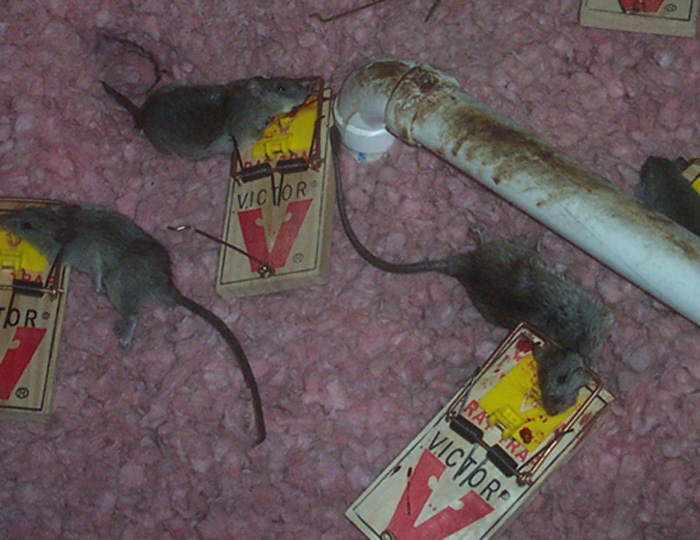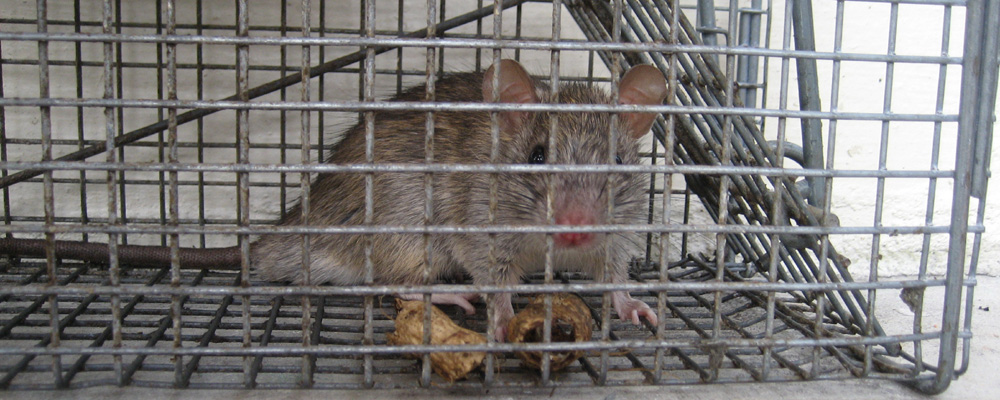- USA Wildlife Removal Education Guide and Resources
How to Trap a Rat

How To Trap Rats - There are many different methods that you can use to deal with a rat problem, and from these the most popular method used to solve the issue is to trap the problem rats, either using lethal traps or cage traps. In order to trap rats successfully, there are different factors to consider, and choosing the right type of trap and getting the right location can make all the difference when it comes to how quickly and efficiently you will catch the rats. There are also a few pitfalls to avoid, so if you follow the right techniques, you can effectively deal with a rat problem which will then give you the chance to repair any focus areas and to exclude the rats for good.
Different Types Of Trap
The type of trap that you use when you are trying to catch your rats can make a big difference to how successful you will be, and different types of trap can be effective in different situations. The costs of the traps can also vary, so it is worth looking at how much you would like to spend as well as the effectiveness of the trap before committing to a purchase.
- 1. Snap Trap This is the most popular and traditional type of trap, and offers a great balance between effectiveness and cost, as it has a reliable but inexpensive spring mechanism mounted on a small piece of wood. Once the rat steps into the trap and triggers the mechanism, the metal bar snaps down across the rat killing it quickly and effectively.
- 2. Body Grip Trap A body grip trap works particularly well if you can identify an entry or exit point that is regularly used by the rat, as it is a metal structure that snaps around the rats body when it is triggered. When placed around an entry hole the rat will only see the trigger, and this will crush the rat's body to death very quickly, and although it can be tricky to set up, it is very effective.
- 3. Glue Trap When it comes to the most unpleasant trap for the rat, this is one which does give the rat a painful and horrible death, as it is effectively just a piece of cardboard that has a strong adhesive spread on one side. This is left in an area of the property which has a high level of rat traffic, and once the animal steps on the cardboard, its feet become stuck and it stays there until it eventually dies of dehydration.
- 4. Gas Trap - This is one of a more modern style of trap, that also includes traps that electrocute the rats, and essentially these require the rat to walk into a chamber, where it is then exposed to a lethal dose of poison gas. The gas kills the rat quickly and efficiently, and is quite a humane way of dealing with the pest animal, although the biggest challenge in this case is disguising the trap appropriately so the rat doesn't know that it is a trap.
When it comes to picking out a good location, this is often the most important part of the trapping process, and you will want to look for a location where the rats are active and visiting regularly. If you are using the traditional snap traps, you may want to place several of these traps, as there can often be more than one rat. Placing traps over entry or exit holes that a rat is using to get in and out of a building or room is also very clever, and will often be a successful way of catching the rat.
Choosing The Right Bait For The Trap
This is a controversial topic as there are some people who view the bait as being essential to successful trapping, while others will view bait as simply an unnecessary addition to the trap. The reality is likely to be somewhere in between, and certainly if you have a rat that is being quite elusive, the right bait can make a difference, and there are many people who feel that peanut butter can be very useful. There are also plenty of other foods that rats will eat, including cat food and fish, but don't worry too much about the bait, as the right location will be the most important aspect to consider.
Can You Use A Cage Trap And Relocate Rats?
Choosing a humane option is something that many people will want to do, and there are plenty of other pest species that can be caught in a cage trap, and then relocated away from urban and suburban areas. Unfortunately, rats do not cope well with being relocated, and there are very few examples of a relocated rat being able to survive. While technically possible, live trapping and relocating rats is not recommended.

Go back to the main Rat Removal page for more information about rat trapping and information about how to catch a rat in a cage trap.

